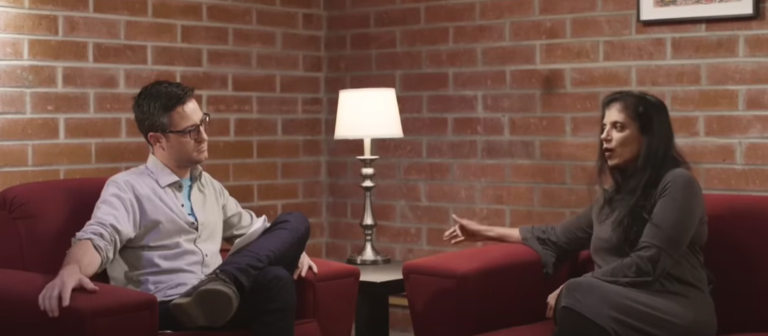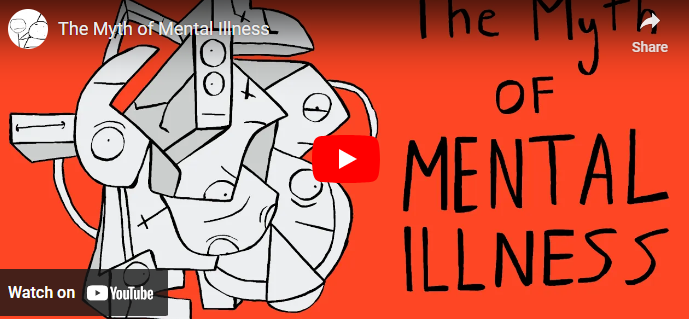
Contents
How Breathwork Techniques Can Help Reduce Anxiety Symptoms
Anxiety disorders affect millions of people worldwide, causing a range of distressing symptoms such as excessive worry, restlessness, difficulty concentrating, and even physical symptoms like rapid heartbeat and shortness of breath. While there are various treatment options available, one powerful yet often overlooked solution is breathwork.
Breathwork refers to a variety of techniques that involve conscious control of the breath to promote relaxation, reduce anxiety, and improve overall well-being. It harnesses the power of the breath to influence the body’s stress response system, providing a natural and accessible tool for anxiety management.
The connection between our breath and our emotions is deep-rooted. When we experience anxiety, our breath tends to become shallow and rapid, leading to increased physiological arousal and further exacerbating our feelings of unease. Breathwork techniques aim to counteract this by encouraging slow, deep breaths that activate the body’s relaxation response.
One of the most effective breathwork techniques for anxiety is diaphragmatic breathing, also known as belly breathing. This technique involves consciously expanding the diaphragm while inhaling, allowing the lungs to fully fill with air. As you exhale, the diaphragm relaxes, and the breath is released slowly. By engaging the diaphragm and taking slow, deep breaths, diaphragmatic breathing helps activate the body’s parasympathetic nervous system, responsible for rest and relaxation. This, in turn, reduces the production of stress hormones and creates a sense of calm.
In addition to diaphragmatic breathing, other breathwork techniques such as alternate nostril breathing, square breathing, and the 4-7-8 technique can also be effective in managing anxiety symptoms. These techniques involve specific patterns of inhalation, hold, and exhalation to regulate the breath and slow down the heart rate, inducing a state of relaxation.
Scientific research supports the efficacy of breathwork techniques in anxiety management. Studies have shown that regular practice of breathwork can lead to a decrease in anxiety levels and improvement in emotional well-being. These techniques have also been found to enhance mindfulness and self-awareness, providing individuals with valuable skills to better cope with stress and anxiety in their daily lives.
To incorporate breathwork into your daily routine for long-term anxiety relief, it is recommended to set aside dedicated time each day for practice. This can range from a few minutes to longer sessions, depending on your preference and schedule. The key is to be consistent and make it a habit.
Breathwork techniques offer a powerful tool for managing anxiety symptoms. By harnessing the power of the breath, individuals can tap into their body’s natural relaxation response, reduce stress hormones, and cultivate a greater sense of calm and well-being. So, the next time anxiety strikes, take a moment to focus on your breath and let it guide you towards a state of peace and tranquility.
The Science Behind Breathwork and Its Impact on Anxiety
Breathwork, a practice that involves conscious control of breathing patterns, has gained significant attention for its potential to reduce anxiety symptoms. But how does breathwork actually work, and what is the science behind its impact on anxiety? In this article, we will explore the underlying mechanisms of breathwork and its benefits for anxiety management.
At a physiological level, breathwork techniques, such as deep diaphragmatic breathing, activate the body’s parasympathetic nervous system. This is the branch of the autonomic nervous system responsible for the body’s rest-and-digest response, which helps counteract the effects of the sympathetic nervous system (fight-or-flight response) associated with anxiety.
When practicing breathwork, individuals engage in slow, deep breaths that expand the diaphragm and engage the lower lobes of the lungs. This type of breathing triggers the vagus nerve, a key player in the parasympathetic nervous system. The activation of the vagus nerve promotes relaxation, lowers heart rate, and reduces the production of stress hormones like cortisol.
Several studies have demonstrated the effectiveness of breathwork in anxiety management. For example, a 2017 study published in the Journal of Psychophysiology examined the effects of breathwork training in individuals with generalized anxiety disorder. The results showed significant reductions in anxiety symptoms, with improvements persisting even two months after the intervention.
Another study published in the Journal of Clinical Psychology in 2018 explored the impact of breathwork on panic disorder. Participants who received breathwork training experienced a significant decrease in both the frequency and intensity of panic attacks. These findings suggest that breathwork can be a valuable tool in managing anxiety disorders.
Breathwork also affects the brain’s functioning, specifically the areas responsible for emotional regulation and stress response. Research using functional magnetic resonance imaging (fMRI) has shown that breathwork increases activity in the prefrontal cortex, a region associated with cognitive control and regulation of emotions. Additionally, breathwork has been found to reduce activity in the amygdala, the brain’s fear center.
Beyond the physiological and neurological benefits, breathwork also promotes mindful awareness. By focusing on the breath, individuals are encouraged to stay present in the moment, allowing them to observe their thoughts and emotions without judgment. This mindfulness practice cultivates a state of calmness and reduces rumination, a common characteristic of anxiety disorders.
Breathwork into a daily routine can lead to long-term anxiety relief. Practicing breathwork for just a few minutes each day can help individuals develop a deeper sense of relaxation and build resilience against stressors. It is important to note that breathwork techniques are not a standalone solution for anxiety disorders, but rather an adjunctive therapy that can enhance overall well-being when used in conjunction with other therapeutic approaches.
The science behind breathwork reveals its potential in anxiety management. By activating the parasympathetic nervous system, regulating brain activity, and promoting mindful awareness, breathwork offers a holistic approach to alleviate anxiety symptoms. Whether utilized as a standalone practice or combined with other therapies, breathwork can empower individuals to regain control of their anxiety and enhance their overall mental well-being.
Breathwork Techniques for Effective Anxiety Management
Anxiety is a prevalent mental health condition that affects millions of people worldwide. While there are various approaches to managing anxiety, one technique that has gained significant attention is breathwork. Breathwork involves employing specific breathing techniques to promote relaxation, reduce stress, and alleviate anxiety symptoms. When incorporated into a comprehensive anxiety management plan, breathwork can be a powerful tool for restoring calm and balance. Here, we explore different breathwork techniques and their effectiveness in anxiety management.
-
Diaphragmatic Breathing: Diaphragmatic breathing, also known as belly breathing or deep breathing, is a fundamental breathwork technique. It involves breathing deeply into the diaphragm, allowing the abdomen to expand fully, and exhaling slowly. This technique activates the body’s relaxation response, reducing the production of stress hormones such as cortisol. Regular practice of diaphragmatic breathing can help regulate the autonomic nervous system, leading to decreased anxiety levels.
-
Box Breathing: Box breathing, also referred to as square breathing, is a structured breathing technique that involves inhaling, holding the breath, exhaling, and holding again for equal counts of time. This technique helps balance the sympathetic and parasympathetic nervous systems, fostering a sense of calm and reducing anxiety. Box breathing is particularly effective during moments of heightened anxiety and can be practiced discreetly in any situation.
-
Alternate Nostril Breathing: Alternate nostril breathing, a technique rooted in ancient yogic practices, involves alternating breaths between the left and right nostrils. This technique aims to purify and balance the body’s energy channels, promoting mental clarity and emotional stability. By harmonizing the flow of breath, alternate nostril breathing helps reduce anxiety and stress while improving focus and relaxation.
-
Counted Breathing: Counted breathing is a simple yet powerful technique that involves focusing on your breath and counting slowly as you inhale and exhale. By shifting your attention to the breath and counting, you can redirect your mind away from anxious thoughts and into a state of present awareness. Counted breathing helps regulate breathing patterns, which in turn calms the nervous system and reduces anxiety.
These breathwork techniques into your daily routine can yield significant long-term benefits in managing anxiety. Start by dedicating a few minutes each day to practice these techniques and gradually increase the duration over time. Consistency is key, and with regular practice, you can develop greater resilience to anxiety triggers and enhance overall well-being.
Breathwork techniques provide a tangible and accessible way to manage anxiety symptoms effectively. By bringing attention to the breath and utilizing specific techniques, you can promote relaxation, reduce stress, and restore equilibrium within the body and mind. Embrace the power of breathwork as a valuable tool in your anxiety management strategy and experience the transformative benefits it offers.
The Power of Breathwork in Anxiety Management
Anxiety is a common mental health condition that affects millions of people worldwide. It can manifest as excessive worry, fear, and physical symptoms such as rapid heartbeat, shortness of breath, and muscle tension. While there are various methods and therapies available to manage anxiety, one technique that has gained significant attention in recent years is breathwork.
Breathwork techniques involve conscious control and regulation of breath, with the aim of promoting relaxation and reducing anxiety symptoms. By focusing on the breath, individuals can tap into the power of their respiratory system, which has a direct influence on their mental and physical state.
The science behind breathwork and its impact on anxiety lies in the connection between the breath and the autonomic nervous system. The autonomic nervous system is responsible for regulating bodily functions that are beyond conscious control, including heart rate, blood pressure, and digestion. It consists of two branches: the sympathetic nervous system (SNS) and the parasympathetic nervous system (PNS).
When individuals experience anxiety, their SNS is activated, leading to the release of stress hormones such as cortisol and adrenaline. This triggers the body’s “fight-or-flight” response, preparing it for potential danger. However, by engaging in breathwork techniques, individuals can activate their PNS, which promotes relaxation and counteracts the effects of the SNS.
Various breathwork techniques have shown effectiveness in anxiety management. One popular technique is diaphragmatic breathing, also known as belly breathing. This technique involves taking slow, deep breaths, filling the lungs fully, and allowing the belly to rise and fall with each breath. Diaphragmatic breathing helps activate the PNS and induces a state of calmness, relieving anxiety symptoms.
Another effective breathwork technique for anxiety management is alternate nostril breathing. This technique involves closing one nostril with the thumb and inhaling deeply through the other nostril, then closing the other nostril and exhaling through the first nostril. Alternate nostril breathing helps balance the flow of energy in the body and promotes a sense of balance and tranquility.
To incorporate breathwork into a daily routine for long-term anxiety relief, it is recommended to set aside dedicated time each day for breathwork practice. This can be done through guided breathwork sessions, online tutorials, or mobile applications that provide specific breathwork exercises. Consistency is key in reaping the benefits of breathwork, so making it a habit is crucial.
For an enhanced anxiety management experience, combining breathwork with mindfulness meditation can be incredibly powerful. Mindfulness meditation involves focusing one’s attention on the present moment, accepting it without judgment. When paired with breathwork, individuals can cultivate a deep sense of awareness and relaxation, effectively reducing anxiety.
The power of breathwork in anxiety management lies in its ability to activate the body’s relaxation response and counteract stress. By incorporating breathwork techniques such as diaphragmatic breathing and alternate nostril breathing into a daily routine, individuals can experience long-term relief from anxiety symptoms. When combined with mindfulness meditation, breathwork becomes even more potent in promoting calmness and tranquility. Start harnessing the power of your breath today and take control of your anxiety.
The Power of Breathwork in Anxiety Management
Anxiety can be a debilitating condition that affects millions of people worldwide. It can manifest as racing thoughts, restlessness, and an overall feeling of unease. While there are various techniques and treatments available, one powerful tool that has gained recognition in recent years is breathwork. By incorporating specific breathing techniques into your daily routine, you can effectively manage anxiety and promote a sense of calm and well-being.
Breathwork involves intentionally controlling and manipulating one’s breath to achieve a desired physiological or psychological effect. By focusing on the breath and engaging in deep, rhythmic breathing, individuals can activate the body’s relaxation response, counteracting the stress response that often accompanies anxiety.
One of the ways breathwork helps reduce anxiety symptoms is by activating the parasympathetic nervous system, commonly known as the "rest and digest" mode. This part of the autonomic nervous system is responsible for slowing down the heart rate, lowering blood pressure, and promoting relaxation. By consciously slowing down and controlling the breath, you can stimulate the parasympathetic response, helping to alleviate anxiety symptoms.
The science behind breathwork and its impact on anxiety lies in its ability to regulate the body’s stress response. When faced with a perceived threat or danger, the body enters a state of heightened arousal known as the fight-or-flight response. This response triggers the release of stress hormones like cortisol and adrenaline, which can further exacerbate anxiety symptoms. By engaging in breathwork, you can reverse this stress response by activating the body’s relaxation response and reducing the levels of stress hormones.
There are various breathwork techniques that can effectively manage anxiety. One popular technique is diaphragmatic breathing, also known as belly breathing. This involves breathing deeply into the belly, expanding it with each inhalation and gently contracting it with each exhalation. This technique helps to slow down the breath, increase oxygenation, and promote a sense of calm.
Another effective technique is alternate nostril breathing, which involves closing off one nostril with the thumb and inhaling deeply through the other nostril, then switching sides and exhaling through the opposite nostril. This technique helps to balance the flow of energy in the body and promotes a sense of inner balance and harmony.
To incorporate breathwork into your daily routine for long-term anxiety relief, set aside a few minutes each day to practice. Find a quiet and comfortable space where you can sit or lie down. Close your eyes and begin by taking slow, deep breaths, focusing on the sensation of the breath entering and leaving your body. Gradually lengthen your exhalations, making them twice as long as your inhalations. As you continue to practice, you may find it helpful to use guided breathwork meditations or apps that provide specific instructions and techniques.
When combined with mindfulness meditation, breathwork becomes an even more powerful tool for anxiety management. Mindfulness meditation involves paying attention to the present moment without judgment. By incorporating breath awareness into your meditation practice, you can cultivate a greater sense of calm, grounding, and self-awareness.
Breathwork is a powerful tool for managing anxiety. By engaging in specific breathing techniques, you can activate the body’s relaxation response, regulate the stress response, and promote a sense of calm and well-being. breathwork into your daily routine, along with mindfulness meditation, can provide long-term anxiety relief and contribute to a healthier, more balanced life. So take a deep breath, exhale slowly, and embrace the power of breathwork in anxiety management.
Conclusion
The power of breathwork in anxiety management is evident through its ability to reduce anxiety symptoms, backed by the science behind its impact on anxiety. By incorporating different breathwork techniques into a daily routine, individuals can effectively manage and alleviate anxiety in the long term. The combination of mindfulness meditation and breathwork further enhances the effectiveness of anxiety management techniques. With the numerous benefits breathwork offers, it is a valuable tool that empowers individuals to take control of their anxiety and improve their overall well-being.
Breathwork techniques have proven to be effective in reducing anxiety symptoms. Deep breathing exercises such as diaphragmatic breathing and 4-7-8 breathing can activate the body’s relaxation response, reducing stress levels and promoting a sense of calm. These techniques help regulate the autonomic nervous system, allowing individuals to better manage anxiety symptoms such as rapid heartbeat, shortness of breath, and restlessness.
The science behind breathwork further validates its impact on anxiety. Research has shown that controlled breathing techniques can directly influence the brain’s neurotransmitters, such as gamma-aminobutyric acid (GABA), which helps regulate anxiety levels. By engaging in breathwork, individuals can stimulate the parasympathetic nervous system, triggering a relaxation response and counteracting the effects of the stress response.
Various breathwork techniques offer different approaches to anxiety management. Box breathing, alternate nostril breathing, and coherent breathing are just a few examples of effective techniques that individuals can incorporate into their daily routines. These techniques are easily accessible and can be practiced anywhere, making them practical tools for managing anxiety in different situations.
Integrating breathwork into a daily routine is key for long-term anxiety relief. Consistency is crucial in reaping the full benefits of breathwork. By setting aside dedicated time each day for breathwork exercises, individuals can establish a habit that helps them manage anxiety proactively. Regular practice strengthens the mind-body connection and allows individuals to develop a sense of control and resilience in the face of anxiety.
When combined with mindfulness meditation, breathwork becomes an even more powerful tool for anxiety management. Mindfulness meditation involves non-judgmental awareness of the present moment, and when combined with conscious breathing, it intensifies the relaxation response. This powerful combination helps individuals become more attuned to their bodies and thoughts, allowing them to observe anxiety without judgment and respond to it in a calmer and more grounded manner.
Breathwork has emerged as a valuable technique for managing anxiety. With its ability to reduce symptoms, its scientific basis, the effectiveness of different breathwork techniques, its integration into daily routines, and its synergy with mindfulness meditation, breathwork provides individuals with an empowering tool to navigate anxiety and cultivate overall well-being. By harnessing the power of breath, individuals can regain control over their anxiety and experience a greater sense of peace and balance in their lives.



